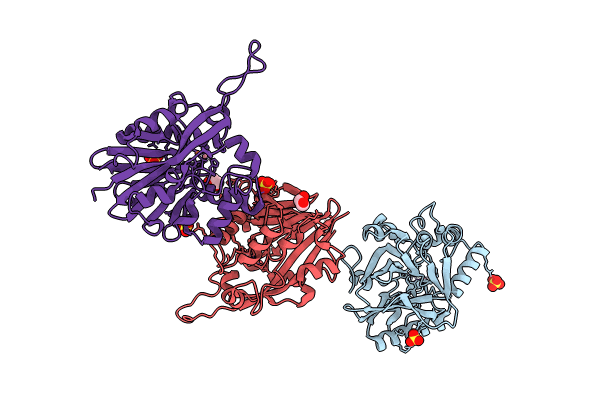
Deposition Date
2024-03-15
Release Date
2024-11-06
Last Version Date
2024-11-06
Entry Detail
PDB ID:
9B2P
Keywords:
Title:
Structure of the quorum quenching lactonase GcL D122N mutant - bimetallic metal center - C2 space group
Biological Source:
Source Organism:
Parageobacillus caldoxylosilyticus (Taxon ID: 81408)
Host Organism:
Method Details:
Experimental Method:
Resolution:
2.25 Å
R-Value Free:
0.23
R-Value Work:
0.20
R-Value Observed:
0.20
Space Group:
C 1 2 1


